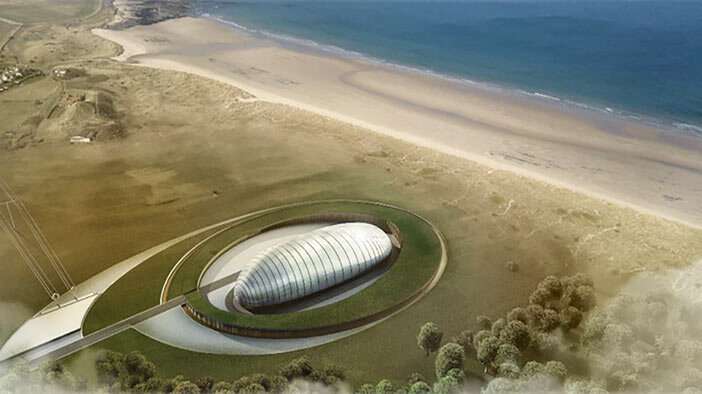
Rolls-Royce plans on building mini nuclear reactors, which could be in operation by 2029. They are less the size of traditional nuclear reactors and they do not take as many years to build.
How mini is that? Roger Harrabin and Katie Prescott reporting in the BBC: "They are about 1.5 acres in size - sitting in a 10-acre space. That is a 16th of the size of a major power station such as Hinkley Point."
The company has stated that this is a low-cost alternative for a global market. "With a modular design that's built in a factory, it can improve certainty of delivery, reduce complexity, optimize safety."
Currently, they said, "nuclear power stations are large scale sites that typically cover an area of over 400,000m2. This is because traditionally once a company has gone through the time and expense of securing an appropriate site, it was more cost effective to build as much capacity on that site as possible. Construction of these sites can take years to complete and their complexity can lead to significant delays and escalating costs."
Why are they building them, you might ask? These would serve as nuclear reactors to generate power in the UK, said designboom.
They would be delivered "in chunks," said Forbes, via trucks.
So, we're looking at plans for nuclear power stations, factory-built, in the UK, that are built and delivered in parts.
"At every point in the development of our UK SMR solution, we have sought to take a modular approach to drive down the cost of electricity to as low as practically possible," Rolls-Royce said on its SMR topic .
Actually, reported the BBC, "Rolls-Royce is leading a consortium to build small modular reactors (SMRs) and install them in former nuclear sites in Cumbria or in Wales. Ultimately, the company thinks it will build between 10 and 15 of the stations in the UK."
The news attracted a clinical neurologist at Yale University School of Medicine, Dr. Steven Novella, who wrote about it in NeuroLogicaBlog. He confessed his mood in the opener. "What do you call it when you are both excited and pessimistic about something at the same time?"
"Actually," he wrote, "small nuclear reactors are not new. We have been using them on nuclear submarines and other vessels for years. What is new is commercial SMRs for grid power."
Why the mixed feelings of being excited, yet pessimistic? After making an argument for what benefits nuclear brings to the energy future, he commented: "...it is technically possible to achieve zero carbon without nuclear, it's just practically not feasible. Now we are getting to the point where I am pessimistic...we have two main political parties, one largely ignored the science on global warming, and the other largely ignores the science on nuclear energy."
Novella noted political figures who were weak on nuclear, and would either wean off or build any new plants, "letting existing plants sunset."
Novella said that "At this point we should explore and pursue every option, and let the chips fall where they may. Taking nuclear off the table is extremely risky, with a very small chance of allowing us to meet even the most conservative climate goals. But the political will is just not there.
"I have to hope that politicians say what they think they need to say, but then consult experts and do the right thing behind the scenes. Or – private companies take matters into their own hands. If Rolls-Royce, for example, successfully develops a cost-effective SMR that works, it will likely be used. Build it and they will come."
A recent assessment of where nuclear power as an energy source stands was made in the BBC report. It pointed out that (1) there were those who think the UK should quit nuclear power altogether (2) those who say the country should focus on cheaper renewable energy instead and (3) environmentalists, divided over nuclear power, "with some maintaining it is dangerous and expensive, while others say that to achieve net zero emissions by 2050 all technologies are needed."
Gaurav Sharma in Forbes explored costs and potential opportunities.
"According to a feasibility study conducted by the U.K.'s National Nuclear Laboratory, there is an estimated global market of up to £400 billion ($525 billion) for energy that cannot, in all circumstances, be met by large scale nuclear reactors and so presents a real opportunity for SMRs. Rolls-Royce can certainly count on a slice of that if things go according to plan."
The BBC quoted Paul Stein, Rolls-Royce CTO. "The trick is to have prefabricated parts where we use advanced digital welding methods and robotic assembly and then parts are shipped to site and bolted together."
© 2020 Science X Network
Citation: Rolls-Royce factory plan puts nuclear reactors on mini scale (2020, January 26) retrieved 26 January 2020 from https://techxplore.com/news/2020-01-rolls-royce-factory-nuclear-reactors-mini.html
This document is subject to copyright. Apart from any fair dealing for the purpose of private study or research, no part may be reproduced without the written permission. The content is provided for information purposes only.
